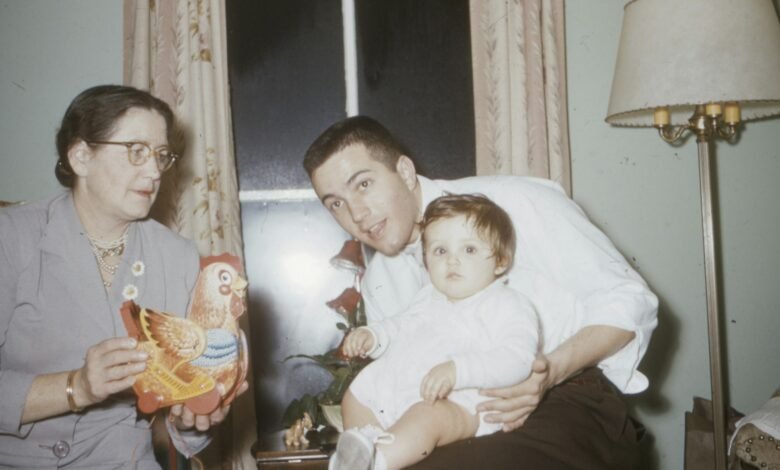The ‘Grandparent Rule’: How to Claim Polish Citizenship Through Your Ancestors

For many people with Polish roots, the idea that a grandparent’s citizenship could open the door to European Union rights feels both exciting and daunting. Family stories mix with legal details, and the line between memory and documentation becomes crucial. The so-called “grandparent rule” is real—but it is not a single statute. It is a practical way of describing how Polish citizenship by descent works when traced through generations. Understanding the legal milestones, collecting the right evidence, and pacing the process can help you move from uncertainty to clarity with care and confidence.
What the “Grandparent Rule” Really Means
Poland follows jus sanguinis—citizenship by descent. In simple terms, you may be recognized as a Polish citizen today if you can prove that:
- Your ancestor was a Polish citizen under the law in force at the time, and
- Citizenship passed uninterruptedly from that ancestor to your parent, and then to you.
There is no skip-generation grant. Instead, an authority confirms that the chain of citizenship was never legally broken. This is why the dates of your ancestor’s birth, emigration, marriage, and any foreign naturalization—relative to your parent’s birth—are so fundamental. A single event (for example, a foreign naturalization before your parent was born) may interrupt the chain. Conversely, if your ancestor naturalized abroad after your parent’s birth, your parent may still have acquired Polish citizenship at birth, preserving your claim.
The Legal Backbone: Timelines That Matter
Key Milestones in Polish Citizenship Law
- 1918–1920: After regaining independence in 1918, Poland adopted the 1920 Citizenship Act. It anchored descent as the main path to citizenship. Married women’s citizenship typically followed the husband’s. Loss of citizenship could occur in various ways, including foreign naturalization without required permissions.
- 1951 Act (effective 19 January 1951): Modernized rules and removed some gender inequalities. During the 1951–1962 period, acquiring a foreign citizenship generally caused an automatic loss of Polish citizenship. Border changes and postwar population transfers also created complex outcomes for individuals from territories that were once within Poland’s borders.
- 1962 Act: A decisive shift. From 1962 onward, loss of Polish citizenship occurs only by formal renunciation with consent of the President of Poland. Simply acquiring another citizenship no longer causes automatic loss. This is pivotal for families who emigrated in the late 20th century.
- 2009/2012 Act: The current framework, clarifying procedures for confirming citizenship and emphasizing continuity by descent.
Why this matters: The law in force when key life events occurred (marriage, birth of a child, foreign naturalization) determines whether the chain remained intact. For example, a grandfather who became a U.S. citizen in 1958 typically lost his Polish citizenship at that time; if your parent was born in 1955, your parent may still be Polish by birth because the loss occurred after their birth.
Events That Commonly Break Continuity
- Foreign naturalization before your parent’s birth (especially between 1951 and 1962) generally breaks the chain.
- Formal renunciation of Polish citizenship at any time breaks the chain from that point forward.
- Marriage rules before 1951: A Polish woman marrying a foreigner could lose Polish citizenship if she acquired her husband’s citizenship automatically under the laws then in force.
- Failure to establish Polish citizenship in the first place: Individuals who emigrated before 1918 or who never met criteria under the 1920 Act may never have been Polish citizens, even if they were born in lands that later became Poland.
Border changes are another sensitive area. People born in areas that were part of interwar Poland (e.g., Lviv/Lwów, Vilnius/Wilno) may still have Polish claims, but outcomes vary by residence, treaties, and postwar administrative decisions. These cases often require targeted archival research.
Who Often Qualifies: Illustrative Scenarios
- Scenario A: Your grandmother was born in Kraków in 1924, emigrated to the UK in 1946, your parent was born in 1950, and your grandmother became British in 1970. The timeline suggests your parent acquired Polish citizenship at birth (1950). Your grandmother’s later British naturalization did not retroactively affect your parent’s status.
- Scenario B: Your grandfather was born in 1910 in a region that was under the Russian Empire but became part of Poland in 1918–1920. If he had a Polish domicile or met 1920 Act criteria, he likely became Polish. If he became American in 1935 without required permissions, he may have lost Polish citizenship then. If your parent was born in 1938 (post-loss), the chain is broken.
- Scenario C: Your grandmother, born in Lwów in 1923, emigrated in 1939, your parent was born in 1952, and she acquired Canadian citizenship in 1954. Under 1951–1962 rules, she likely lost Polish citizenship in 1954—after your parent’s birth—so the chain may remain intact to your parent and then to you.
These examples are indicative, not definitive. Small differences—exact dates, local laws at marriage, documentary proof—can change results. Approach each case as a tailored legal puzzle.
Proof: Documents You Will Likely Need
Authorities assess facts, not family lore. Prepare to assemble a paper trail for the entire lineage from the Polish ancestor to you:
- For the Polish ancestor: Polish birth/baptism certificates, pre-war or post-war passports, Polish ID cards, military records, residency cards, voter lists, or archival certificates. If born outside today’s Poland, seek records from relevant national or ecclesiastical archives.
- For each generation: Long-form birth and marriage certificates, any name-change records, proof of residence, and death certificates where applicable. Ensure dates are unambiguous.
- Naturalization evidence abroad: Certificates of naturalization, oath dates, or official statements confirming that naturalization never occurred. The exact date is often decisive.
- Translations and legalization: Certified translations into Polish as required. Apostilles or consular legalizations may be needed depending on the country of issue.
- Variant spellings: Plan for discrepancies in names, places, or dates. Provide supporting evidence (e.g., ship manifests, census entries) to connect variants.
Practical tip: When records are missing, target alternative sources—military rolls, school registers, occupational licenses, city directories, and parish archives. Write to regional archives in Poland or successor states, and consider both civil and church records.
Process and Timelines: From Assessment to Confirmation
Step-by-step
- 1) Eligibility assessment: Map your lineage and list key dates. Identify potential breaking points (foreign naturalization, marriage before 1951, renunciation). If unsure, create a timeline spreadsheet to visualize overlaps.
- 2) Evidence gathering: Order certified copies of vital records. Request naturalization files or “no record” letters from foreign authorities. Keep originals safe; use notarized copies when instructed.
- 3) Archival research: If the Polish ancestor’s status is unclear, seek archival confirmation (e.g., citizenship registers, pre-war municipal records). Professional archival searches can save time where indexes are incomplete.
- 4) Translations and formalities: Arrange sworn translations into Polish and obtain apostilles/legalizations early to prevent last-minute delays.
- 5) Filing the application: You typically apply to a Polish voivode (provincial office) or via a Polish consulate for a decision confirming citizenship (potwierdzenie posiadania obywatelstwa polskiego). The package includes forms, identification, and all supporting documents.
- 6) Waiting period: Processing times vary widely, often several months and sometimes longer. Complex, multi-jurisdictional cases may take more time.
- 7) After confirmation: Once recognized, you can apply for a PESEL number and a Polish passport.
For a structured self-check and to understand how dates interact with the law, more context is available here: https://fivetoeurope.com/polish-citizenship-test/
Rights and Responsibilities After Confirmation
- EU mobility: Live, work, and study in any EU country. This can reduce tuition fees, increase employment options, and simplify residence formalities.
- Healthcare and social systems: Depending on residence and insurance contributions, Polish/EU citizenship may improve access to public healthcare and social services.
- Consular protection: Access consular assistance from Poland (and, as an EU citizen, certain protections in non-EU countries where Poland has no embassy).
- Administrative responsibilities: Use your Polish passport when entering/leaving Poland, keep civil status records updated, and be mindful of tax rules based on residence (citizenship alone does not usually create tax liability; residence and income sources do).
Common Pitfalls—and How to Avoid Them
- Relying solely on family anecdotes: Verify every claim with documents. Vague statements like “grandpa was Polish” are starting points, not proof.
- Ignoring marriage and gender rules pre-1951: A grandmother’s citizenship may have followed her husband’s status. Check both spouses’ timelines.
- Overlooking exact naturalization dates: A difference of months relative to a child’s birth can change the outcome.
- Not addressing name/locale variations: Standardize spellings across documents and include evidence explaining discrepancies.
- Skipping apostilles or sworn translations: Missing formalities can delay or derail a decision.
- Assuming border changes void claims: Many individuals from former Polish territories still qualify; these are research-intensive but viable cases.
Costs, Planning, and Well-being
Financial: Expect costs for certificates, apostilles, sworn translations, postage, and potential archival or legal assistance. Create a budget and prioritize key documents first to avoid unnecessary spending.
Organizational: Keep a checklist and a digital folder with labeled scans. Track requests to archives and agencies with dates and reference numbers. A simple project plan reduces delays and repeated efforts.
Emotional and health considerations: Reconstructing family histories can be moving and occasionally difficult. Pace the work, take breaks, and involve family members who can share memories or documents. The process can deepen connections across generations while remaining manageable for your well-being.
Professional guidance: Complex cases—especially those involving pre-1951 marriages, name discrepancies, or multiple jurisdictions—often benefit from specialized advice. A single consultation can prevent months of misdirected effort. Experienced practitioners at Five to Europe are one example of resources people turn to for nuanced, fact-specific analysis.
Key Takeaways
- The “grandparent rule” is about continuity: You must show that your ancestor was a Polish citizen and that citizenship passed to your parent and then to you without legal interruption.
- Dates matter: Pay special attention to events between 1951 and 1962, pre-1951 marriage rules, and the timing of foreign naturalizations relative to births.
- Documents drive decisions: Long-form certificates, naturalization records, and archival evidence are essential; translations and apostilles are not optional formalities.
- Patience and structure help: Treat the process like a careful research project with timelines, to-do lists, and backups.
Reclaiming citizenship through your grandparents is both a legal inquiry and a personal journey. By grounding your steps in the correct legal timelines and solid documents, you give yourself the best chance of an accurate, timely decision. If your family’s story spans wars, borders, and name changes—as many do—consider additional research or expert input. The goal is not only to secure a passport but also to honor a lineage, clarify identity, and make informed choices about your future in Europe.




